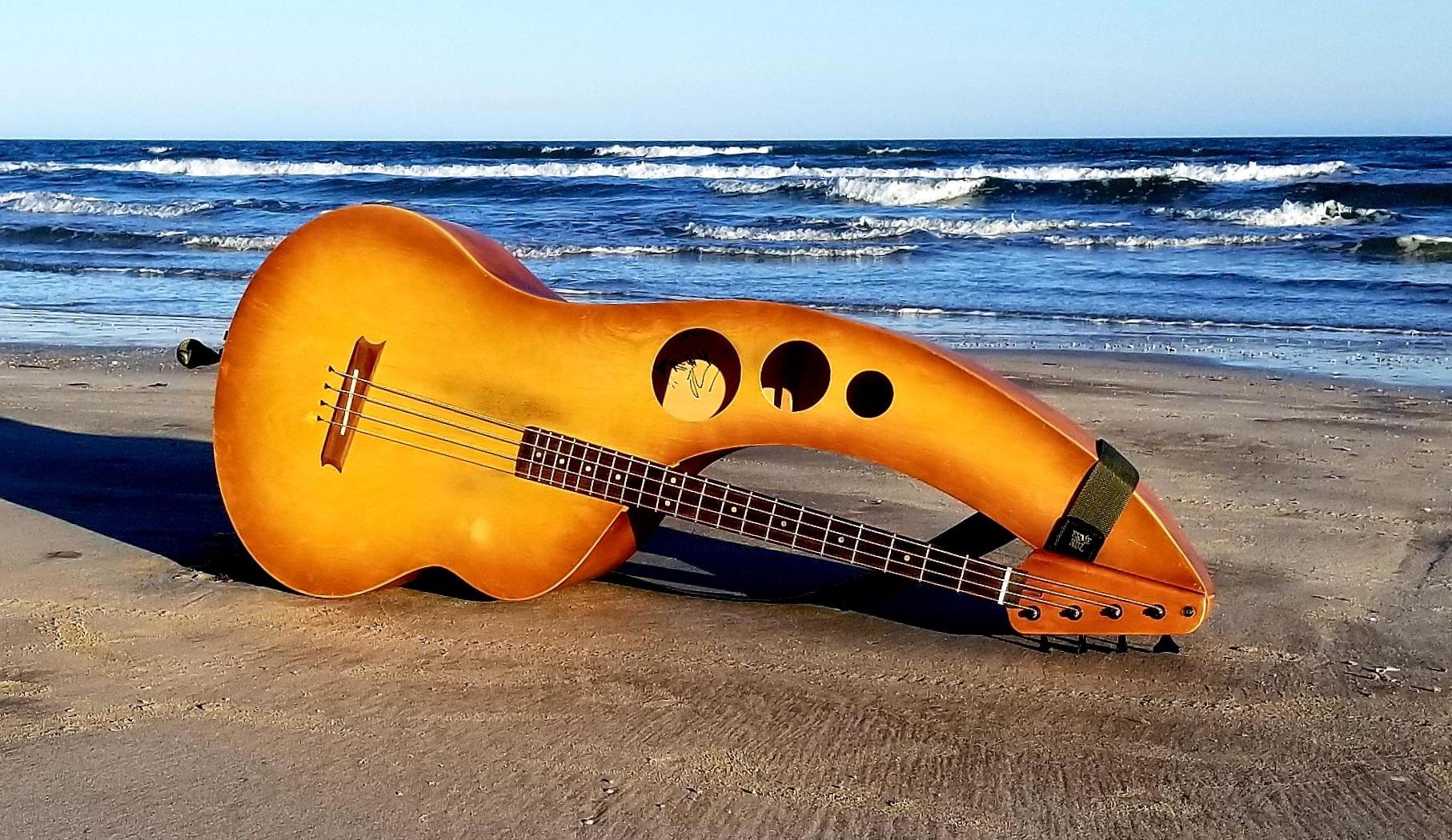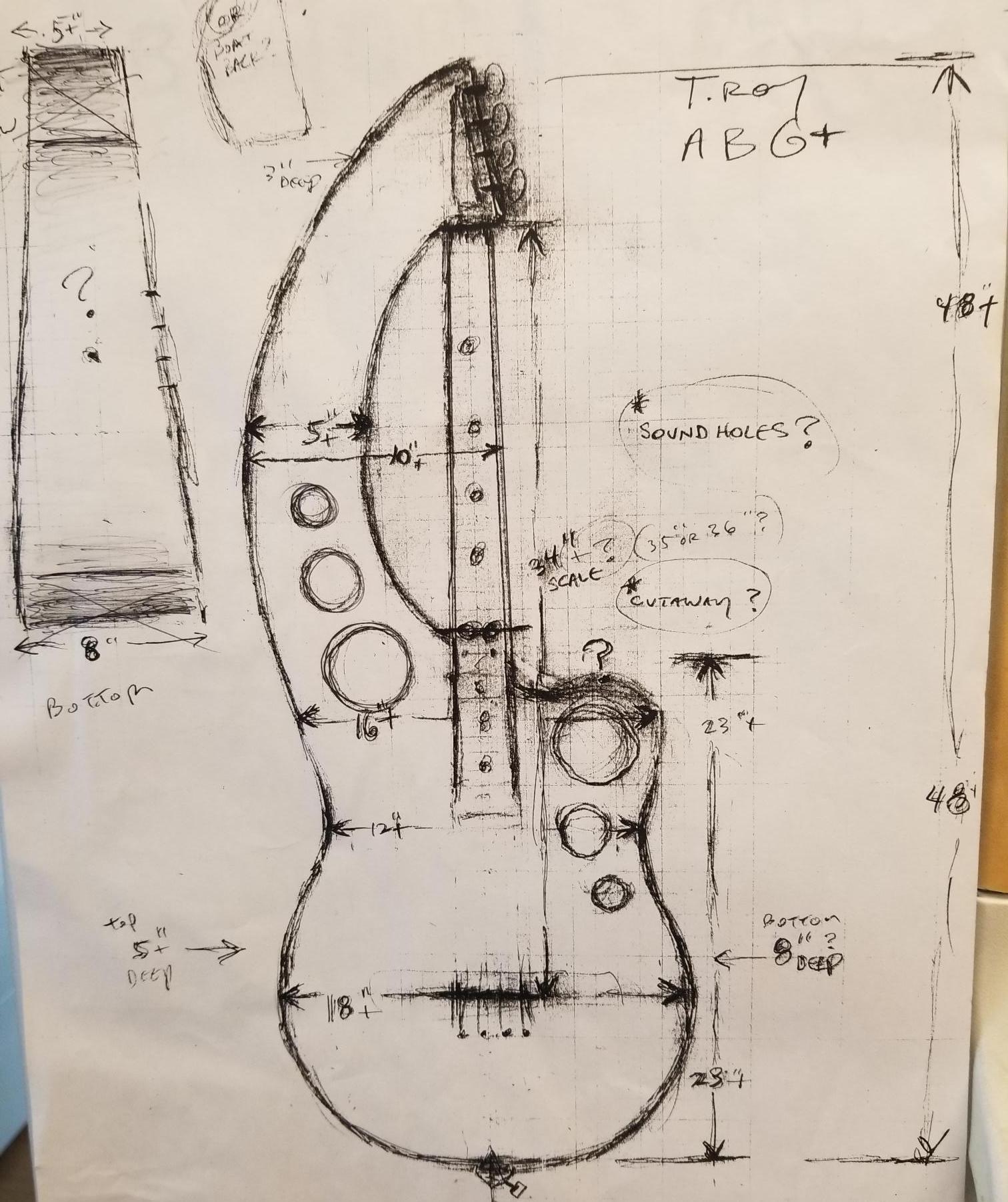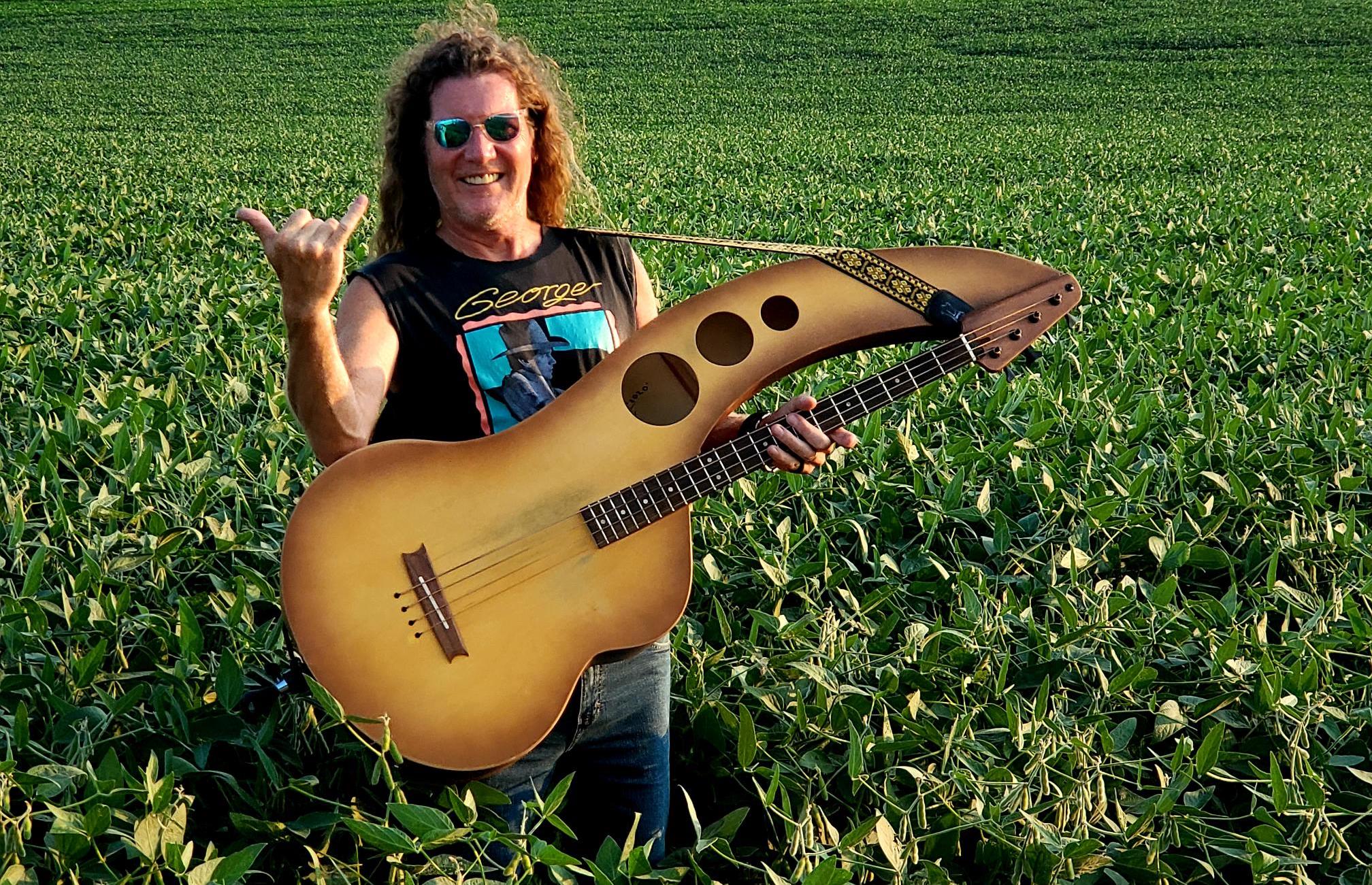This wild trapezoidal flatback four-string is said to have more volume and sustain "than any acoustic bass in the known universe"
Bassist Troy Johnson – who's performed and recorded with Stephen Pearcy – saw deficiencies in the acoustic bass market, and built an acoustic bass like no other

Bass guitar veteran Troy Johnson spent a number of years touring with Ratt frontman Stephen Pearcy, among other artists. During his travels, particularly a mid-oughts acoustic tour with Pearcy, Johnson noticed what he felt were a number of deficiencies in the acoustic bass guitar market.
Though he enjoyed playing the Washburn AB45 he used for the jaunt, Johnson was left uninspired by its performance when not amplified.
After watching his friend, John Hargiss of Hargiss Stringed Instruments, build a harp guitar while making a resonator for Johnson's banjo bass though, inspiration struck.

"I would go from the upright, to the guitarrón/mariachi bass and the harp guitar, plucking and listening," Johnson said. "I then drew up a trapezoidal flatback body with guitarrón/Ernie Ball Earthwood dimensions, and an extended harp arm that connects to the headstock, almost creating a small grand piano.”
The bass features a top, back and sides made of 2-ply birch, and a 34” scale maple neck with a rosewood fingerboard. It can be played with a guitar strap, or with an endpin like an upright bass.
The bass can be ordered either fretted or fretless, and comes packing a K&K Twinspot pickup and with a gig bag included.

At the end of the day, The Big Johnson Bass – according to its inventor – "has more volume, sustain, durability and playability than any acoustic bass in the known universe."
Get The Pick Newsletter
All the latest guitar news, interviews, lessons, reviews, deals and more, direct to your inbox!
A steep claim, no doubt, but one that we'd love to potentially examine with the scrutiny of a demo someday.
For more info on The Big Johnson Bass, stop by Johnson's website.
Jackson is an Associate Editor at GuitarWorld.com. He’s been writing and editing stories about new gear, technique and guitar-driven music both old and new since 2014, and has also written extensively on the same topics for Guitar Player. Elsewhere, his album reviews and essays have appeared in Louder and Unrecorded. Though open to music of all kinds, his greatest love has always been indie, and everything that falls under its massive umbrella. To that end, you can find him on Twitter crowing about whatever great new guitar band you need to drop everything to hear right now.
“An esoteric boutique vibe, superb ergonomics and a powerful, unique preamp – Tobias is back”: Tobias Growler IV review
“Affordable versions of the three best basses I've ever held in my hands”: Sterling by Music Man completes its trilogy of Joe Dart signature models with a trio of made-to-order basses that cost less than $500










